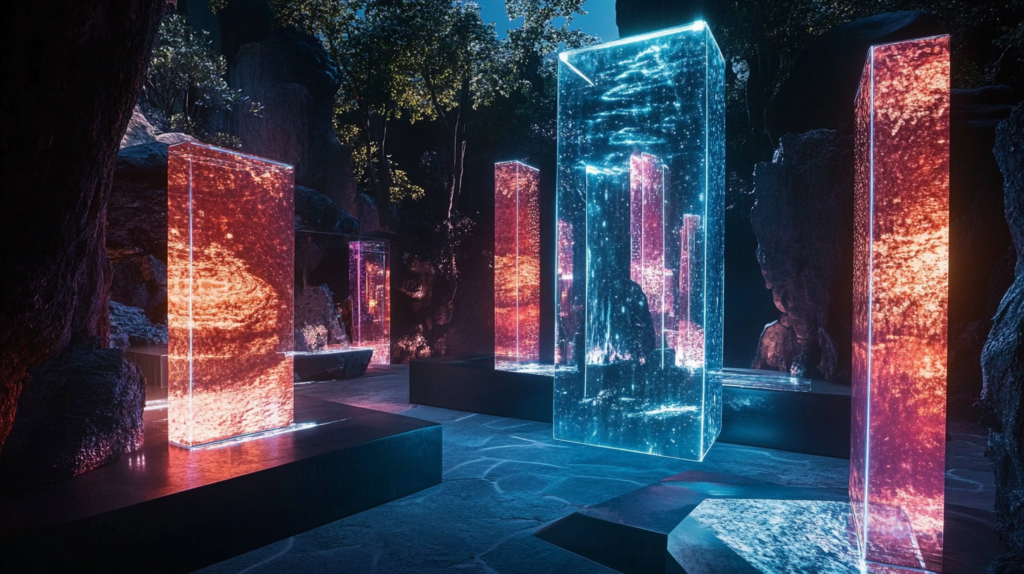
Quantum Holography in UI: A Revolutionary Leap in 3D Interface Design
In user interface (UI) design, the advent of quantum holography is set to redefine our digital interactions. As the era of flat, two-dimensional interfaces fades, the future shines brightly with the immersive, three-dimensional capabilities of quantum holography. This groundbreaking approach is not just science fiction but a tangible evolution poised to transform user experiences across diverse platforms.
Quantum holography utilizes principles of quantum mechanics to create high-resolution, three-dimensional holographic projections. These advancements in 3D interface design are far removed from the holograms of yesteryear’s imaginations. Quantum holography in UI design facilitates the creation of interfaces that are not only visually compelling but also fully interactive in real-time, providing an unprecedented level of depth and realism.
The professional user experience (UX) community stands on the cusp of a revolution. Imagine crafting interfaces that allow users to engage with complex data through simple hand gestures or navigate digital terrains as though they were physically present. The opportunities to amplify user engagement and streamline interactions are vast. Yet, this technological leap also presents significant challenges, such as ensuring universal accessibility and managing users’ cognitive load.
One of the most promising applications lies in education and training. By visualizing complex concepts and procedures in three dimensions, quantum holography can offer an immersive learning experience that dramatically improves understanding and retention. From medical students practicing on holographic patients to engineers dissecting new designs from every conceivable angle, the potential to enhance education and training beyond real-world limitations is immense.
Beyond professional applications, the entertainment sector could witness a new era of gaming and storytelling. Gamers could find themselves fully immersed in three-dimensional worlds, blurring the lines between digital fantasy and reality. Such experiences would only be limited by content creators’ creativity, heralding an unprecedented era of interactive entertainment.
However, the journey toward widespread adoption is fraught with technical and conceptual challenges. The computational demands of rendering intricate holograms in real-time, coupled with the need to develop intuitive interaction models, signal a significant evolution for UI design. This evolution will necessitate acquiring new skills and adopting novel design perspectives.
Furthermore, ethical considerations must not be overlooked. As UI design becomes more immersive, it is imperative to consider the potential for overstimulation and the blurring of lines between digital and physical realms. Striking a balance where these technologies augment rather than diminish our real-world experiences will be crucial.
Despite these hurdles, integrating quantum holography in UI design seems unstoppable. Early experiments and prototypes have showcased the technology’s capability to deliver visually captivating and deeply engaging user experiences. As research progresses and the technology matures, quantum holography is set to revolutionize the landscape of UI design.
For the UX community, this represents both an exhilarating opportunity and a formidable challenge. Keeping pace with this evolution will demand not just technical expertise but also a profound reevaluation of design principles. Crafting interfaces that are both functional and enriching and ensuring these innovations are accessible to a broad audience are paramount.
As we stand on the threshold of a new era in UI design, propelled by quantum holography, it is evident that the future will transcend traditional screens and pixels. It will focus on forging deeper, more meaningful connections between humans and the digital realm. Quantum holography in UI design offers a glimpse into that future, challenging us to envision and create interfaces that surpass the confines of current technology. The path ahead may be lined with challenges, but the promise of transformative experiences is an irresistible call to action. Let’s embrace this quantum leap into the future of 3D interface design, where the boundaries between the digital and physical worlds increasingly converge.


